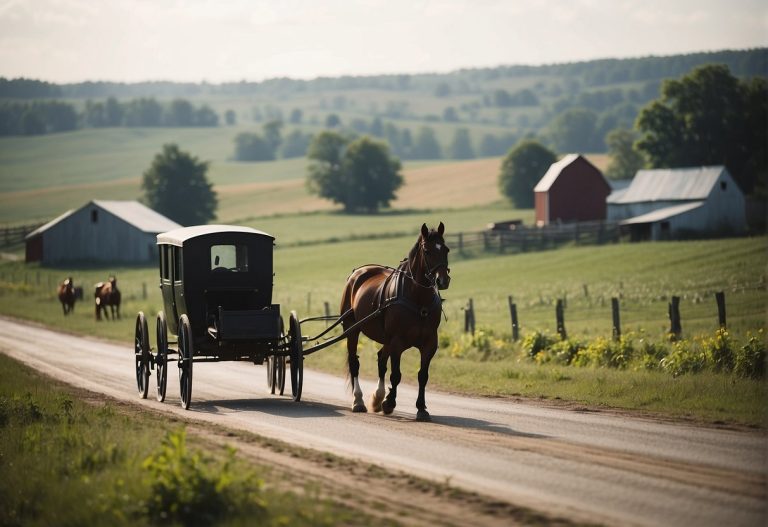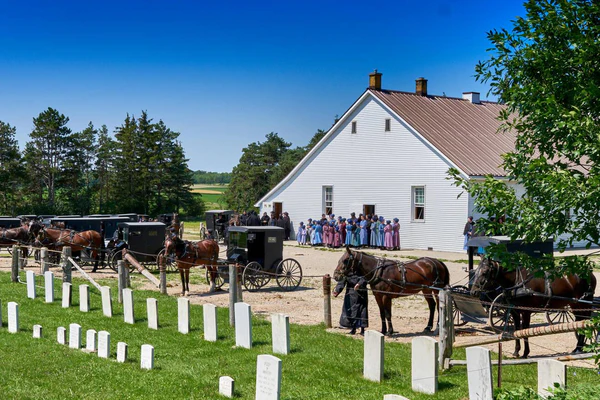How Museums Help Keep Amish Traditions Alive
The Amish community values faith, family, and hard work. These traditions have guided their way of life for centuries. Today, museums play an important role in preserving and sharing these values with the world. Through exhibits, storytelling, and interactive programs, museums help keep Amish traditions alive for future generations.
Preserving Cultural Heritage
Museums serve as guardians of Amish heritage. They collect and protect artifacts such as clothing, tools, and furniture that reflect daily Amish life. Visitors can see original pieces handcrafted by Amish families decades ago.
By showcasing these items, museums ensure that the skills and values behind them are never forgotten. Every handmade quilt, wooden chair, or farming tool tells a story about dedication, simplicity, and community spirit.
Sharing the Amish Way of Life
Many people are curious about how the Amish live without modern conveniences. Museums bridge that gap by offering a respectful and accurate look into their world. Exhibits often recreate traditional homes, barns, and schoolhouses, allowing visitors to experience daily life up close.
Guided tours help visitors understand the importance of faith, family, and hard work in Amish communities. These educational experiences promote understanding and appreciation of a lifestyle that values purpose over progress.
Teaching Through Interactive Experiences
Interactive exhibits make learning about Amish culture engaging and memorable. Visitors can try butter churning, quilt stitching, or carpentry under expert guidance. These hands-on activities highlight how the Amish rely on skill, cooperation, and patience rather than technology.
Children especially enjoy these experiences because they learn by doing. By participating, they gain respect for craftsmanship and teamwork—values that lie at the heart of Amish tradition.
Celebrating Handcrafted Art and Design
Amish craftsmanship is famous for its beauty and quality. Museums often feature exhibits showcasing handmade furniture, quilts, and decorations. Each piece reflects years of tradition and generations of skill.
By displaying these works, museums honor artisans who preserve their culture through creativity. Visitors leave with a deeper respect for the patience, discipline, and care that define Amish artistry. These exhibits remind everyone that beauty can come from simplicity.
Educating New Generations
Amish museums do more than preserve history—they educate. Schools often partner with museums to teach children about cultural diversity and the value of hard work. Through guided tours and special programs, students learn that traditions can thrive even in a modern world.
These lessons inspire young visitors to appreciate different ways of living. Museums help bridge generations by connecting young people to the past through engaging, real-life stories.
Encouraging Respect and Understanding
Museums play a vital role in promoting respect for Amish beliefs. They provide context for customs such as modesty, humility, and community living. Visitors come to understand why the Amish avoid technology, choose plain dress, and focus on faith.
This understanding builds tolerance and appreciation between different cultures. Through education, museums encourage visitors to reflect on their own values and lifestyles.
Supporting the Amish Community
Many Amish museums and cultural centers work closely with local Amish families. Some exhibits include crafts or goods made by Amish artisans, helping support their livelihoods. This collaboration ensures that cultural exchange happens respectfully and benefits both sides.
Visitors who purchase handmade items or attend workshops contribute directly to preserving Amish craftsmanship and community traditions.

Inspiring Simplicity in Modern Life
Museum experiences often leave a lasting impression. Many visitors say that seeing Amish life up close inspires them to simplify their own routines. The focus on family, faith, and self-reliance offers valuable lessons in a fast-paced world.
Through these exhibits, museums show that happiness and purpose do not always come from technology or wealth—they come from connection, discipline, and gratitude.
Conclusion
Museums play a powerful role in keeping Amish traditions alive. They preserve artifacts, share stories, and offer hands-on experiences that celebrate a culture rooted in simplicity and faith. By educating visitors and supporting Amish communities, these institutions ensure that time-honored customs continue to thrive.
Every visit to an Amish museum becomes more than a history lesson—it becomes a reminder of the enduring strength of tradition. In a world that changes quickly, museums help keep the values of the Amish alive, one story and one exhibit at a time.



